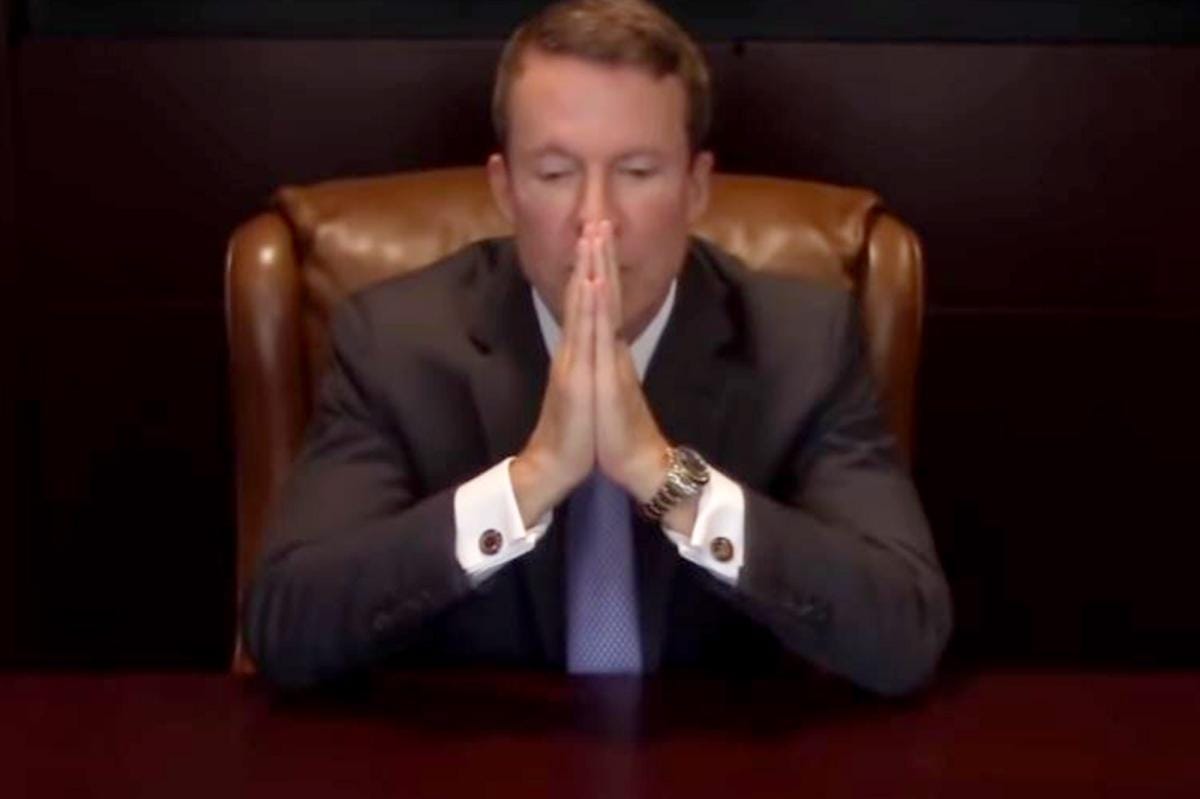It is an old kitchen maxim that “a dull knife is more dangerous than a sharp knife.” It’s not so paradoxical for anyone who has done any cooking. Dull knives have quite literally lost their edge. They behave unpredictably, a risk compounded by the additional force the user typically applies to get them to work. They shoot to the left or right when they should descend straight down, catch in the middle of a long cut, and seem more prone to hop off the board entirely.
I recently had my kitchen knives sharpened and was shocked by their newfound efficacy. Knowing the instrument was sharp, I also noticed how much more care I took. Another risk of dull knives is the carelessness with which we wield them.
Knives are a form of leverage, a mechanical advantage that creates more output force than input force. Output force is more likely to turn back on you when using a dull knife.
In How to Lose Money, I wrote about Bob Citron’s blow-up of the Orange County Investment Pool, but countless sophisticated investors have been wounded by instruments they thought they understood. D.E. Shaw invokes the woodshop instructor:
"Leverage and power tools share three fundamental properties: they can be extremely helpful, they can allow for far greater precision, and they can be really dangerous, even in the hands of experts. We would wager that some of us who took a woodshop or metalshop class in high school had instructors—however masterful a carpenter or machinist—who were missing at least one finger due to a moment of inattention while operating a table saw."
Financial markets are littered with dull knives.
Zero-day options, levered ETFs, and betting markets that hide derivatives principles behind real-world binary outcomes are dull knives. While they may be transparent regarding the amount of leverage employed, the terms, reliability, and structure of the leverage are obscured.
Information asymmetry is great for the sellers of these products and bad for the users. It preys on a jackpot mentality that has spread rapidly through society since 2020. As wealth from crypto, SPACs, and gamified options trading seemed to be doled out randomly, investors saw a game they thought they should be playing. There is a simple bias at play: the fact that people can win far more than they lose gives an intuitive but entirely inaccurate view of risk and reward.
Scimitar Capital wrote an excellent explainer of “the Jackpot Paradox” a few months ago. Assume a coin flip game where one can double their net worth on heads, but lose 60% on tails. This creates an expected 20% net worth gain per flip. Stopping there, you should flip the coin infinitely.
But this expected value reflects the arithmetically average outcome, which includes the exceedingly rare consecutive heads outcomes that create extraordinary wealth. In fact, the expected (average) value is heavily skewed toward these outcomes. It’s the average of ALL possible outcomes.
When you use a geometric mean that reduces the statistical weight of jackpot outcomes, the expected value of the game turns negative; it compounds negatively over time.
Per Scimitar:
“The discrepancy between arithmetic and geometric means forms what I call the Jackpot Paradox. Physicists call it the ergodicity problem and traders call it volatility drag. You can’t always eat the expected value when it’s squirreled away in rare jackpots. Risk too much hunting jackpots and the volatility will turn positive expected value into a straight line to zero. In the world of compounded returns, the dose makes the poison.”
It’s hard to tell if a knife is sharp just by looking at it — most people rationally assume every knife is sharp. Most chefs will tell you the vast majority of knives are, in fact, quite dull. Investors face a similar paradox.
Financial markets do offer some sharp knives.
The zero-sum nature of markets leads people to believe that any time leverage is offered, the loser is more likely to be the borrower than the lender. However, terms and time horizons are not static across participants, and the entire function of finance is to move money through time.
Borrowers need future dollars today, while savers and investors require today’s dollars sometime in the future. Markets match these parties across price and terms. Occasionally, those factors align in favor of the borrower.
Home Mortgages
The most obvious example is the American home mortgage, which offers 30-year, fixed-rate debt with no prepayment penalty. The structure of this leverage is extremely borrower-friendly, but the terms also benefit lenders because it creates both a steady stream of origination and the homogeneous structure supports a robust secondary market for the assets.
The Equity of Investment-type Companies
There is an argument that balance sheet companies, or in Whitman’s words “investment-type companies,” such as REITs, BDCs and other specialty finance firms, are sharp knives that investors can access. The public equity of these firms allows investors to participate in the leverage extended to the entity, often term debt with lower rates, to make investments that yield above the companies’ cost of debt financing.
GP Participation in Private Equity and Credit
Equity participation in General Partnership stakes, such as the large public alternative managers Apollo, Blackstone, and KKR, is a sharp knife. These firms effectively get paid a steady stream of fees to originate call options on their underlying portfolios, with equity investors benefitting from the realized carry of those investments.
On financial innovation…
Finance gets a bad rap. The phrase “financial engineering” often carries a pejorative connotation. At the heart of most speculative blow-ups is some form of misunderstood or misapplied leverage.
At the same time, our quest for non-inflationary growth demands debt. Households don’t merely want to exchange goods; they also try to allocate their financial capital in ways that build long-term wealth, often involving some form of leverage. Hyman Minsky scholar Martijn Konings writes,
Economic interaction is shaped not primarily by the wish to exchange our surplus commodities but by the drive of economic units to secure their future by making the right investments. Financing such investments requires economic units to borrow from others, and in this way households weave an intricate web of debt relations.
A huge whitespace exists for creating financial products that help investors make markets their servants, not their masters.
In 2012, Yale economist Robert Shiller wrote “Finance and the Good Society,” arguing that finance serves as a "social technology" that can advance human welfare by efficiently allocating resources and spreading risks across society.
“The key to achieving our goals and enhancing human values is to maintain and continually improve a democratic financial system that takes account of the diversity of human motives and drives. We need a system that allows people to make complex and incentivizing deals to further their goals, and one that allows an outlet for our aggressions and lust for power. It must be a system that redirects the inevitable human conflicts into a manageable arena, an arena that is both peaceful and constructive.”
I used to work in timber markets and became fascinated with how environmental services markets formed, using regulation as a primer for liquidity in hard-to-price social and environmental outcomes like clean water or carbon capture. Last year, I explored an idea wherein homeowners could swap a portion of their home equity, and the “buyer” would take on the liability of their property taxes. The elderly could use this to manage their expenses on a fixed income. Conversely, younger home owners could apply the savings to build equity in their home faster than they would otherwise — property taxes can represent up to 20% of a mortgage payment early in the life of a mortgage.
We are far from the limit of what the social technology of finance can do, but we are even further from its spirit. Minsky called the inevitability of debt in social relations the “Wall Street paradigm,” a way of thinking that has infiltrated society far broader than when it was coined. Meanwhile, most “Wall Street” innovation has focused on distributing dull knives to amateur chefs.










